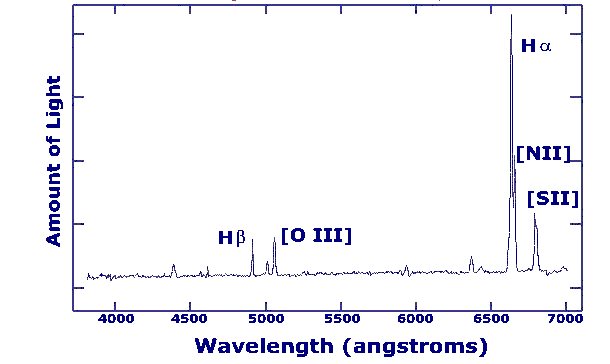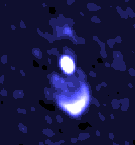Starbursts & Colliding Galaxies


|
|
Gene Smith's Astronomy Tutorial Starbursts & Colliding Galaxies |
 |

Starbursts & Infrared Galaxies
Since the mid-1970s astronomers have known that some galaxies go through intense bursts of star formation, producing large numbers of luminous young stars and related supernovae. Astronomers have dubbed these "Starburst Galaxies". The immensely successful Infrared Astronomical Satellite, launched in 1983, showed that starbursts may be a common mode of evolution for galaxies and that starbursts may be intensely luminous, emitting quasar-like amounts of energy at infrared wavelengths.

The spectrum of a Starburst Galaxy looks much like that of an ionized hydrogen region because the light from these galaxies is dominated by giant HII regions ionized by recently formed, massive, hot stars. Although not all Starbursts may be explained by galaxy collisions, many are clearly stimulated by collisions or mergers of gas-rich galaxies, as in the case of the Antennae (NGC 4038 & 4039) shown below.
| This animation of a Galaxy Collision between spiral galaxies was made from a computer simulation, one of the most detailed ever carried out, by Lars Hernquist & Chris Mihos on the UCSD Supercomputer. It was featured in the highly recommended IMAX film, Cosmic Voyage. |
Ultraluminous Infrared Galaxies and Quasars
 |
 |
 |
 |
 |
| Artists impression
of a
merger between
the Andromeda Galaxy and the Milky Way as viewed from the earth
(which
may not still be around then). Andromeda and the Galaxy are
headed toward each other with a speed of about 120 km/s, suggesting that they
may collide in about 5 billion years. As the galaxies near one another
Andromeda will grow from the barely visible patch of fuzz to a spindle shaped
blob in the northern sky (1). As the galaxies close together tidal forces will
distort the disk of our Galaxy and Andromeda (2). As the galaxies begin to
collide, the stars will pass between each other (remember, the stars are like
grapefruits separated by thousands of miles). But stellar orbits will be
distorted and giant, dusty molecular clouds will begin to crash together (3).
Collisions of molecular clouds will set off bursts of star formation. The
galaxies will pass through each other, but, if the collision is head-on,
they will turn around and fall into a common center, perhaps initiating an
intense nuclear starburst (4). If this happens, intense supernova explosions
and "superwinds" will drive out the gas and dust as stars settle down into
new orbits in a newly-formed elliptical galaxy (5). Many astronomers think
that the nuclear starburst may feed the Black Holes believed to be lurking in
the galaxy nuclei giving birth to a new quasar, as suggested by the jet in the
last image.
Artwork by James Gitlin (Space Telescope Science Institute) | ||||
 Our research suggests that the Luminous IR Galaxy Markarian 231 may house a
quasar that was born about 100,000 years ago in a galaxy merger.
Our research suggests that the Luminous IR Galaxy Markarian 231 may house a
quasar that was born about 100,000 years ago in a galaxy merger.

![]() The Big Bang
The Big Bang
![]() Active Galaxies
Active Galaxies
![]() Education & Outreach
Education & Outreach
![]() CASS Home
CASS Home
Conducted by Gene Smith, CASS/UCSD.
Comments?
You may send email to hsmith@ucsd.edu
Prof. H. E. (Gene) Smith
CASS 0424 UCSD
9500 Gilman Drive
La Jolla, CA 92093-0424
Last updated: 29 Sept. 2000